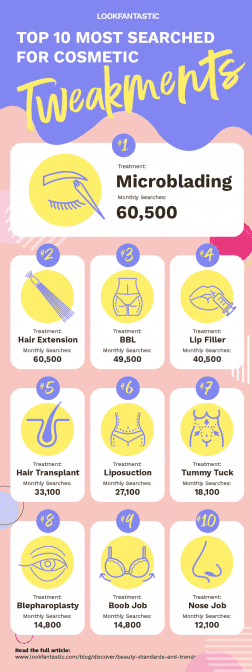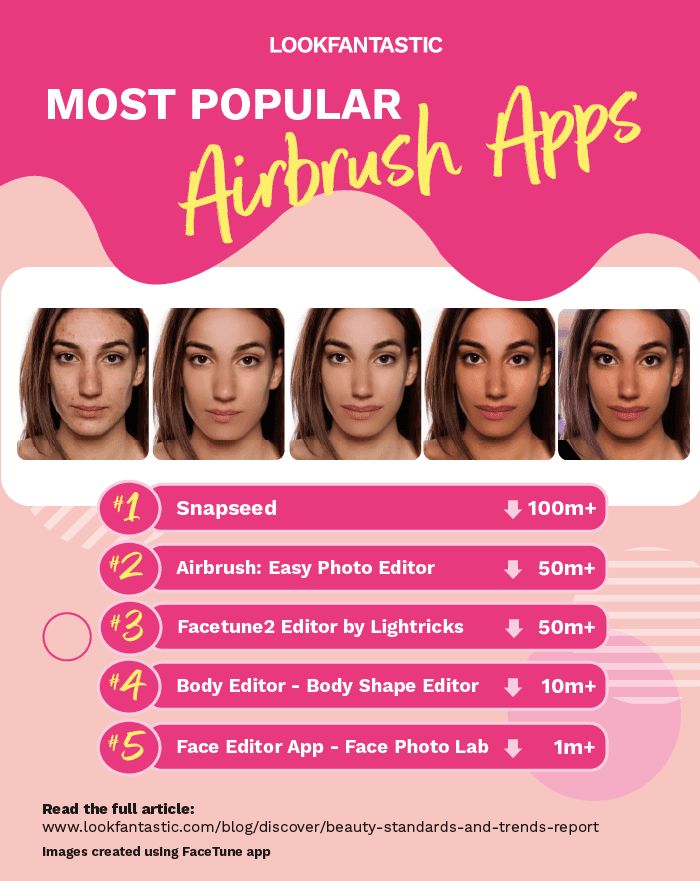These days, almost every photo app and tool provides some level of beauty enhancement capability, with a range of filters and effects designed to hide blemishes, remove age lines, thin your frame, and all sorts of other visual contortions, in order to make people feel more comfortable about sharing their selfies with an audience.
The problem with this is that it also contributes to unrealistic beauty standards, with users then comparing themselves to these increasingly airbrushed and sculpted depictions, which often bear little resemblance to reality. That in turn changes beauty standards across the board, and can contribute to negative self-perception, with research showing that 32% of teen girls feel worse about their bodies after scrolling Instagram.
But how prominent is the use of beautification filters, and what are the real impacts of such, based on key trends?
That’s what beauty brand LookFantastic sought to determine with its latest study, which looked at key beauty trends across the web, along with the most popular enhancement apps, in order to get a sense of what’s driving these behaviors, and how significant they’ve become.
As per LookFantastic:
“Over the past year, Google searches for ‘instagram filters that change your face’ have increased by a staggering 100% alongside Dove recently finding that 85% of young girls have already edited their appearance by the time they’re 13 years old.”
These a frightening stats, which somewhat underlines the above-noted noted findings which came from leaked reports based on Meta’s own research.
In terms of the most commonly searched for beauty procedures, LookFantastic found that lip fillers and liposuction are among the most popular topics.

Focusing more specifically on TikTok, the study data shows that trends relating to diet and cosmetic procedures are very popular in the app.

This, again, is concerning, especially given the popularity of TikTok among younger audiences. And when you also consider that many of the top influencers are posting their content with digital enhancements enabled, it further underlines the need for more transparency in this regard – because if people are structuring their diet around completely unrealistic approaches, that could do significant harm, in many ways.
LookFantastic also analyzed the most popular beauty enhancement apps, based on Google Play Store activity.

You can see from these images how significantly these apps can alter your appearance – and again, it’s often impossible to know when these filters and tools have been applied, which can be dangerous in terms of comparison and response.
Though some efforts are being made to address this.
Back in 2020, Snapchat offered preliminary support for a proposed a new law in the UK which would force social platforms to add labels to any posted image that had been digitally altered or enhanced (the proposal is still under consideration), while Google has also removed default image re-touching in its Pixel devices after research showed that this can have negative psychological impacts.
TikTok, Snapchat and Instagram have all also added notifiers on images where effects have been applied – though this is not a solution, as such, given that users can alter their photos in other apps before posting to these platforms.
There are alternative proposals, including advanced systems that can detect changes in an image using more in-depth assessment of the pixels themselves. But thus far, those have not been applied in a detection sense within social apps – and again, there are questions over the potential effectiveness of such approaches given the variable way that images can be rendered before posting.
But clearly, this is a significant concern, and more action should be considered. The platforms themselves need to be more involved in this, and provide solutions that can address this element – because right now, these are some frighteningly dangerous trends that are proliferating across social networks.
You can read LookFanstastic’s full report here.



